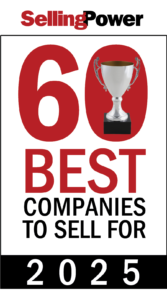Six-Step Cold Calls
Cold calling can be a hit-or-miss game. Many top salespeople spend a full day every week simply cold calling to build their prospect base. Yet other salespeople seem unable to make cold calling a regular and lucrative part of their sales strategy. With the right cold calling strategy, though, you can stack the odds of success in your favor. To keep your prospect’s attention long enough to present your product, use this six-step cold calling action plan every time you pick up the phone or walk through a prospect’s door:
1) Arouse your prospect’s curiosity. Within the first minute of your conversation, you have to give your prospect a reason to let you continue. What can you say about your product that will make your prospect sit up and take notice? If you’ve done your homework, you might have an idea of how your product can help meet your prospect’s most important goals or solve their most serious problems.
Make a brief, specific statement about your product’s capabilities and how it will increase your buyer’s business or help them do their job more effectively. Describe how your product (or a similar but inferior version) is helping your prospect’s competition. Chances are, your prospects will want to know what’s in it for them, so be prepared to tell them quickly and concisely.
2) Qualify the prospect. As you’re trying to raise your prospect’s interest in you, find out how interested you should be in them. Do they have a legitimate need for your product? Can they afford to buy it? Do they seem sincerely interested in it? Prepare a list of open-ended questions that uncover goals, needs, budget and anything else you need to know to determine whether you and your prospect are a good business match. As always, listen more than you talk. If you can’t identify a need for your product, admit it. Your prospect may reward your honesty with a good referral.
3) Mirror your client. As a rule, people like to buy from other people like them. To sell to a variety of clients, you have to adapt your approach and be able to communicate with each prospect at their individual level. To show prospects you’re “one of them,” adopt some of their gestures and mannerisms. Let your tone, vocabulary and rate of speech reflect theirs.
Your goal should be to sound more like your prospects without making it obvious to them. Watch for clues the moment you walk in the door. Did the prospect greet you with a smile? Engage you in small talk? Want to get straight down to business? Show your prospect that you’re two of a kind and you’ll boost your odds of making the sale.
4) Build rapport. Great rapport can help you get the sale as easily as a great product at a great price. Building rapport with prospects encourages them to trust you, which makes it easier for them to buy from you. Before you meet with or speak to your prospects, find out what you have in common with them.
When you call the receptionist to schedule an appointment, do a little research on your prospect. You might ask about your prospects’ hobbies, favorite sports teams or favorite foods or if they’ve celebrated a recent birthday, anniversary or other special occasion. Explain your questions by saying that you don’t intend to pry or be nosy, but that you always like to find out a little about your prospects before you meet them.
5) Act natural, but professional. When you meet with your prospect, remember that you’re not just selling your product, you’re selling yourself. Make sure your hair, clothes and posture make a positive statement about you. Project an air of quiet confidence. If you talk too much, or act uptight or nervous, you might raise your prospect’s suspicions. Rehearse your presentation for your colleagues and have them critique your performance. Guide your prospects to a buying decision without making them feel like they’re being sold.
Based on the impression you make, your prospect may decide to buy from you once, over and over again or not at all.
6) Prepare for your next call. Make notes on your first call to help you prepare for the second. Write down what you talked about to build rapport, your prospects’ level of interest, the questions they asked and the important points of your presentation.
On your second appointment, be prepared to refresh your prospect’s memory of the first one. Note the appearance of the office to help you decide how to set up a slide presentation or how you’d like to physically set up your next call. When you ask for your second appointment, get a specific date and time to return. Finally, be sure to ask for the sale on the first call to help make sure there will be a second.
Cold calling leaves a lot to chance, which means your sale can hinge on how well you’ve prepared for your calls. A good strategy gives you a chance to examine the obstacles that stand between you and a sale and to plan how you’ll overcome them. It also gives you the confidence to know you can face anything your prospects throw at you. No one can guarantee cold call success, but persistence and thorough preparation can make sure the odds are in your favor.
Get our eNewsletter
Get the latest sales leadership insight, strategies, and best practices delivered weekly to your inbox.
Sign up NOW →